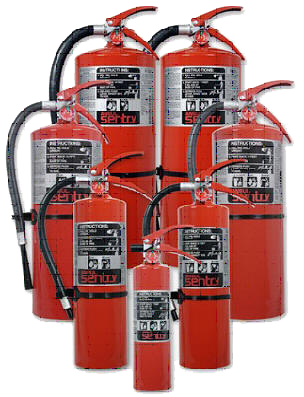Fire Extinguisher Inspection

Unlike smoke alarms, which chirp to tell us maintenance is required, fire extinguishers have no built-in alarm to remind us that attention is needed. To ensure yours are in proper working order check out these fire extinguisher inspection guidelines.
At Home:
1. Check for pressure
Many fire extinguishers for use at home have a pressure gauge indicating whether it is in the proper range. Low pressure is a sign that it needs to be recharged or a new extinguisher is needed.
2. Check for damage
Check that the cylinder, hose and nozzle are in good condition. If the extinguisher is dusty, oily or greasy it can be cleaned as part of your inspection. Visible signs of damage, such as rust or dents, indicate it’s time for a replacement.
In the Workplace:
Monthly:
OSHA requires employers to perform a visual inspection of all fire extinguishers every month. Check to ensure they are free of visible damage.
Annually:
An annual inspection, carried out by a certified and licensed fire inspector from a fire protection equipment company is legally required. A dated inspection tag, valid for one year, is provided for every passing extinguisher.
Hydrostatic Testing:
Hydrostatic testing of wet chemical extinguishers is done every five years, dry chemical extinguishers every 12 years.
Internal Inspection:
Every six years an internal inspection must be completed by a fire protection company. The process consists of discharging, examining and recharging each fire extinguisher.
All checks and inspections should be documented. Any fire extinguisher that fails inspection must be repaired or replaced.
To ensure you remain up-to-date with your fire extinguisher inspection requirements, contact our team at Getz Fire Equipment Company today.

